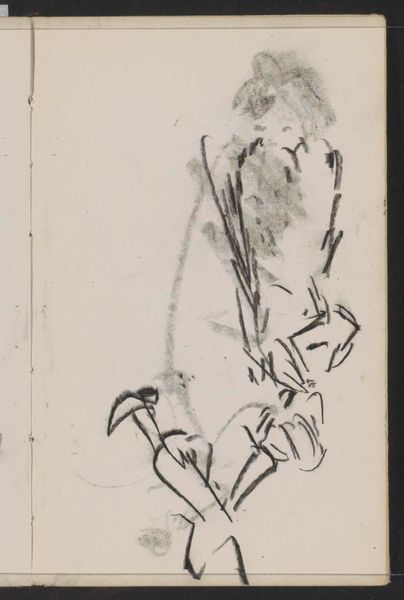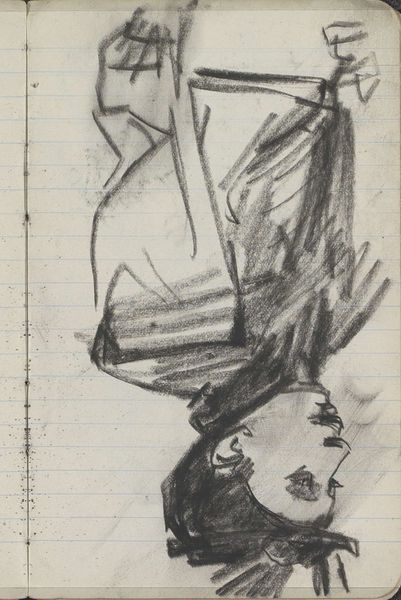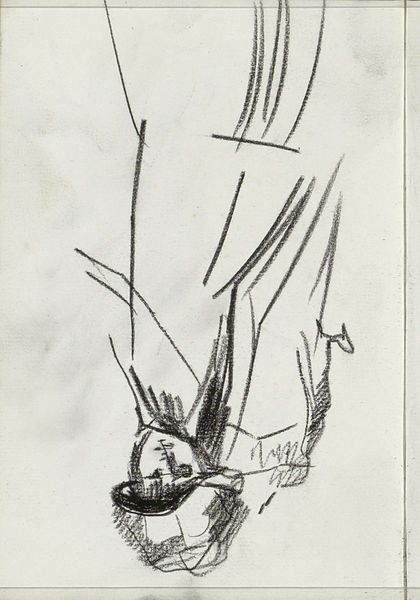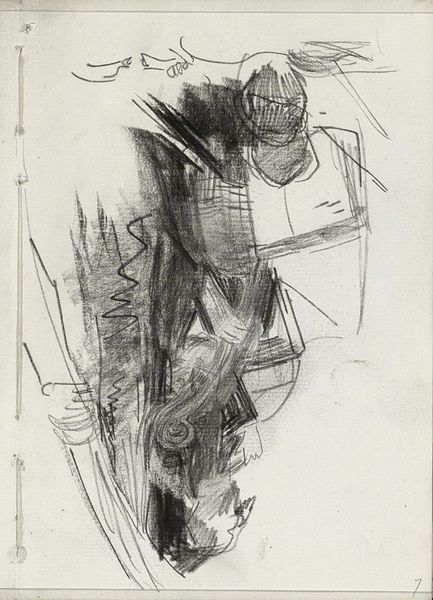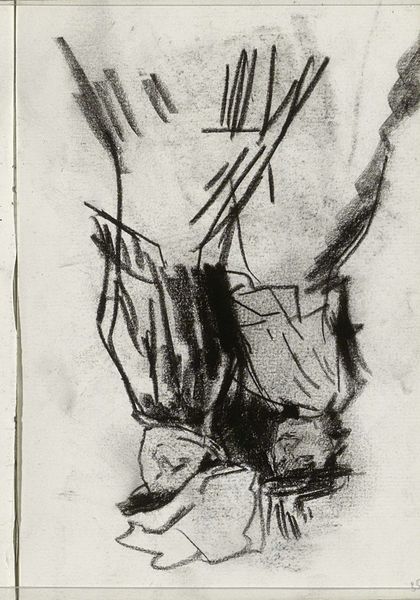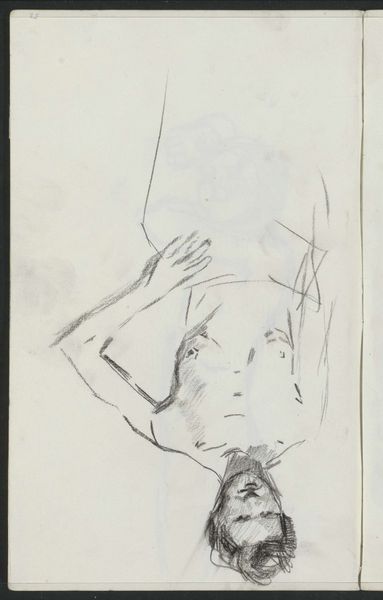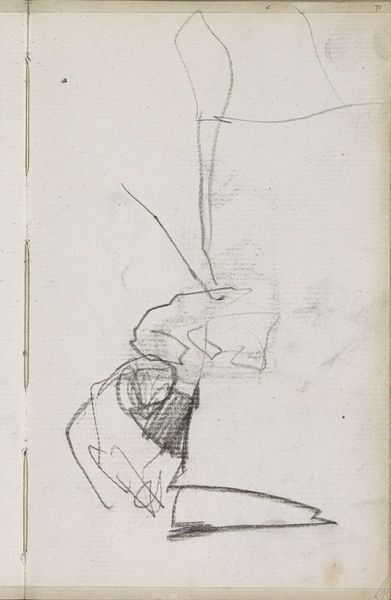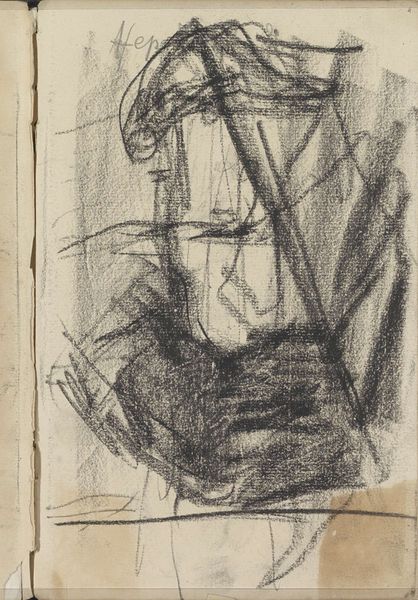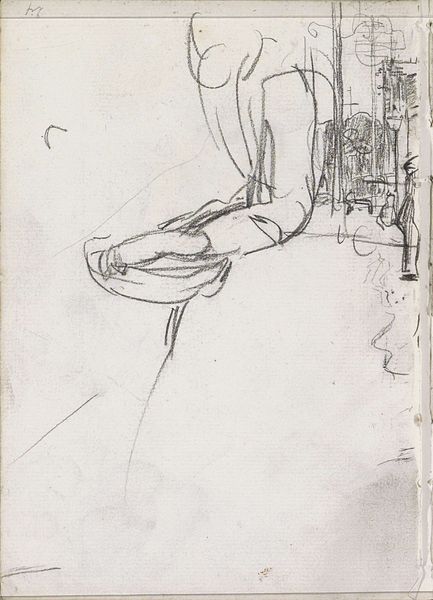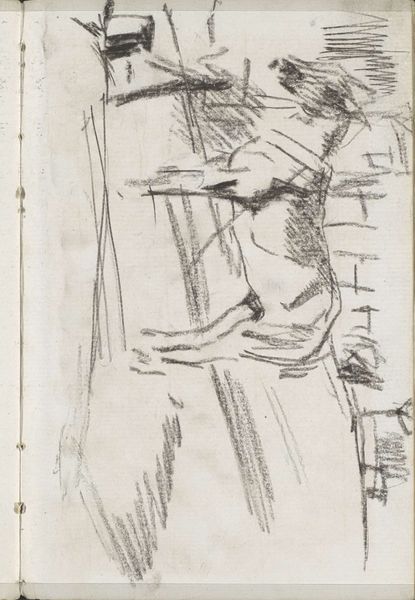
Copyright: Rijks Museum: Open Domain
Curator: Before us, we have "Zittende vrouw met ontbloot bovenlijf," which translates to "Seated Woman with Bare Torso." It’s a drawing by Isaac Israels, estimated to have been made sometime between 1875 and 1934. Editor: There's an immediacy here, isn’t there? Raw charcoal strokes on paper, conveying a sense of the artist quickly capturing a moment. I am struck by the lack of color, giving the model the appearance of fading away like something forgotten. Curator: It certainly embodies the intimate spirit common in late 19th and early 20th-century portrayals of women, though Israels himself may have approached the subject through his unique blend of realism and Impressionist techniques, giving the artwork a fleeting appearance. The figure becomes a symbol of observation in its contemporary social mores. Editor: And consider those charcoal strokes. See how they build the form? It’s all about texture, really. You can practically feel the grain of the paper and see where Israels pressed harder to define the shadows beneath the bust and to give detail to her clasped hands. There’s a real connection to the physical act of making art. Curator: Absolutely. But I think there's also an important dialogue to be had about the objectification of women inherent in the nude form. It compels us to confront complex histories of looking, the artist’s perspective and how those power dynamics affect the way we perceive the work now. Editor: Agreed. This pushes past that to me, in a way. The sketch-like quality downplays the typical “male gaze” inherent in fine art, making it seem closer to something from everyday life rather than high art. And Israels doesn’t overly romanticize his subject—just simply a raw depiction of a working model at rest. Curator: Well said. By understanding the sociopolitical backdrop against which Israels was working, we glean additional layers of depth—understanding it as more than just a drawing, and also considering how this artwork mirrors changing societal views about intimacy, privacy, labor, and femininity. Editor: So, by focusing on the material and process here, and looking through the drawing itself, perhaps it gets us closer to that world—to Israels’s studio, the model’s work, and the changing city. Curator: Precisely. It's about seeing how social consciousness is intricately interwoven in both the historical narrative of the artwork and also how its interpretation is evolving as the social environment and ideology morph around it. Editor: This work definitely demonstrates how examining process and purpose intertwine. It's always more layered than you expect at first glance!
Comments
No comments
Be the first to comment and join the conversation on the ultimate creative platform.
